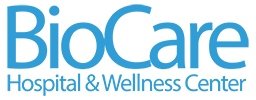Advanced diagnostic assessment
The advanced medical microscopy used at Bio Care Hospital, whose research and development involved IBC principals over many years, is a state-of-the-art system, including digitalization and a video monitor, which allows the clinician to gather a tremendous amount of information in a short period of time. Sometimes erroneously called dark field microscopy-a reference to one of its modes-the system uses drops of capillary blood expressed from the fingertip, for the utilization of the clot-retraction (CRT) and live-blood tests (LCA), although the system is well fitted for medical microscopy in general.
The dark field mode allows many elements of blood not clearly visible in the bright field mode to come into clear view. At better than 15,000 magnification, the practitioner may see numerous factors of living, circulating blood including red blood cells, white cells, platelets, yeast forms, chylomicrons, cholesterol crystals, bacteria, mycoplasma and other structures.
Live Cell Analysis hence allows the physician to see, in color and at extremely high optical magnification, a patient's response to diet, medications and pathogens. Such evaluations allow for weekly and even daily patient monitoring and arguably diagnosis.
It’s predecessor: the "clot retraction" test, which has had various names, is utilized at lower magnification to examine the clotting factors in dried blood.
It has been determined that an essential element in this test is the serum's response to "free radicals," which are molecular breakdown products common in the processes of oxidation and inflammation. These compounds which are normally generated by metabolic activity of the body can increase substantially in a number of conditions ranging from inflammation to cancer.
They can also increase when the normal anti-oxidant system either fails or loses efficiency due to the presence of toxins or disease.
The appearance of coagulated blood can indicate many pathological conditions and/or the body's response to therapies and healing. Images from both CRT and LCA are digitally collected to produce pictures that can be analyzed by the doctor and used to promote the patient's understanding of the processes and the result of therapies. Hard copies form part of the patient's file for follow-up and comparison.
Experience has shown that certain conditions, which would later plague the patient, were first observed via the CRT and LCA in a visible, clinical mode before standard laboratory tests detected them. Hence, the tests, properly done with the advanced microscopy system, are often predictive, as well as diagnostic.
